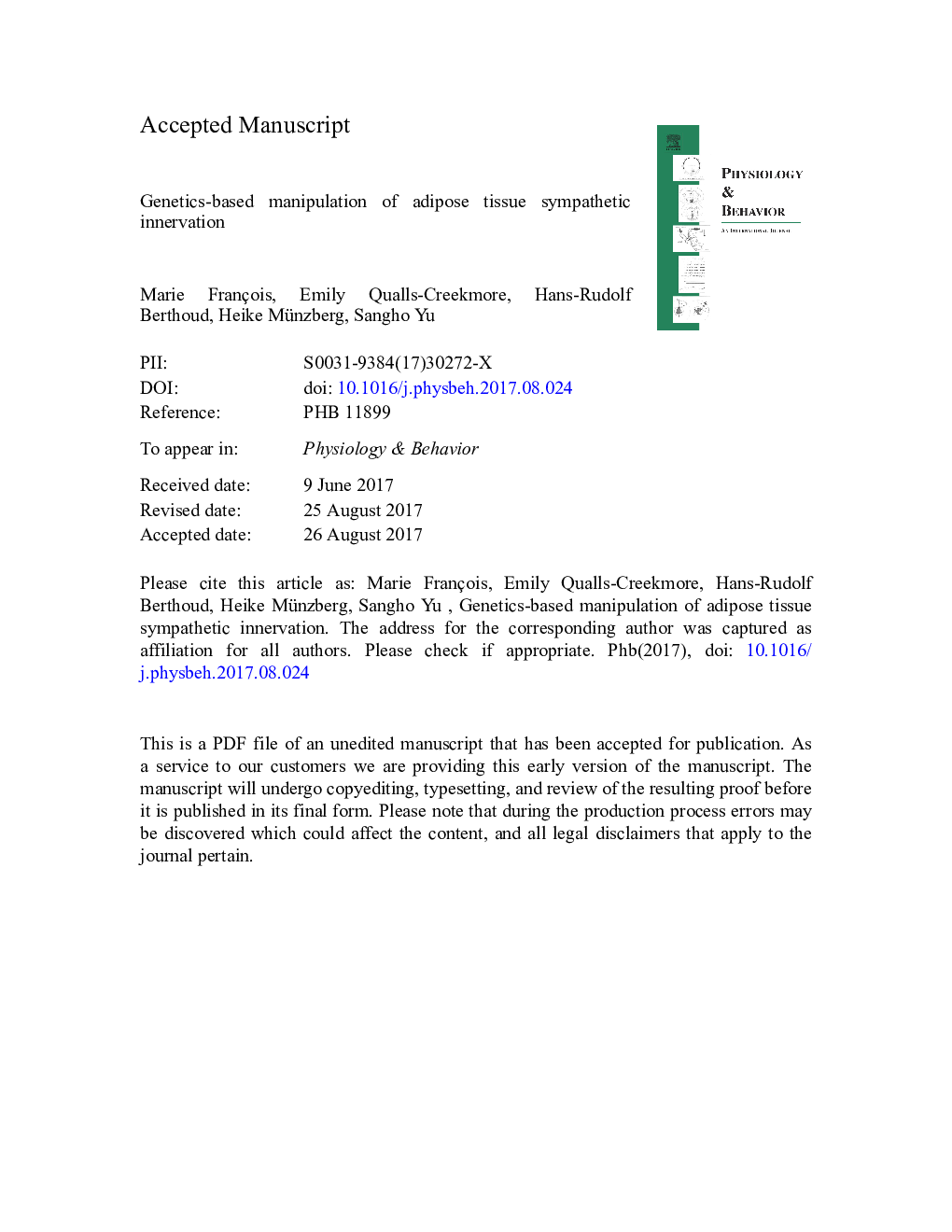| Article ID | Journal | Published Year | Pages | File Type |
|---|---|---|---|---|
| 8650522 | Physiology & Behavior | 2018 | 27 Pages |
Abstract
There is renewed interest in leveraging the thermogenic capacity of brown adipose tissue (BAT) and browning of white adipose tissue (WAT) to improve energy balance and prevent obesity. In addition to these effects on energy expenditure, both BAT and WAT secrete large numbers of hormones and cytokines that play important roles in maintaining metabolic health. Both BAT and WAT are densely innervated by the sympathetic nervous system (SNS) and this innervation is crucial for BAT thermogenesis and WAT browning, making it a potentially interesting target for manipulating energy balance and treatment of obesity and metabolic disease. Peripheral neuromodulation in the form of electrical manipulation of the SNS and parasympathetic nervous system (PSNS) has been used for the management of pain and many other conditions, but progress is hampered by lack of detailed knowledge of function-specific neurons and nerves innervating particular organs and tissues. Therefore, the goal of the National Institutes of Health (NIH) Common Fund project “Stimulating Peripheral Activity to Relieve Conditions (SPARC)” is to comprehensively map both anatomical and neurochemical aspects of the peripheral nervous system in animal model systems to ultimately guide optimal neuromodulation strategies in humans. Compared to electrical manipulation, neuron-specific opto- and chemogenetic manipulation, now being extensively used to decode the function of brain circuits, will further increase the functional specificity of peripheral neuromodulation.
Related Topics
Life Sciences
Biochemistry, Genetics and Molecular Biology
Physiology
Authors
Marie François, Emily Qualls-Creekmore, Hans-Rudolf Berthoud, Heike Münzberg, Sangho Yu,
